Malaysia’s Ramadan bazaars draw crowds, but some tighten belts
The nightly markets are popular with Muslims and non-Muslims alike but there are concerns of food going to waste.
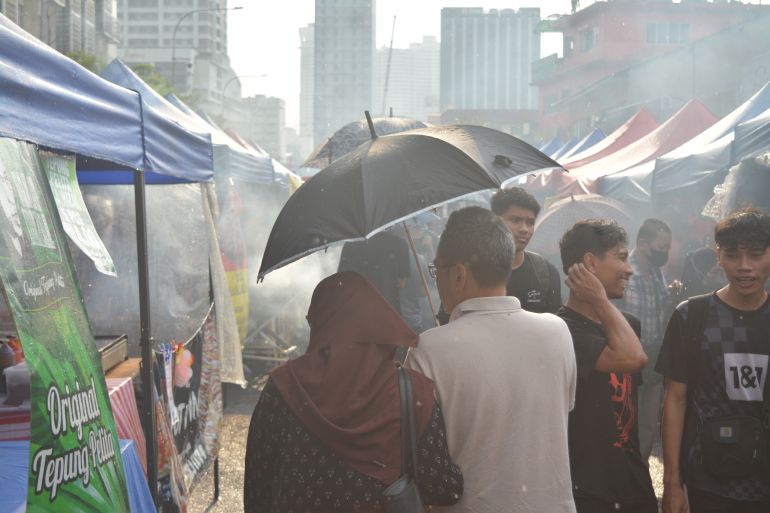
Kuala Lumpur, Malaysia – It is late afternoon in Kuala Lumpur and despite the oppressive heat, a crowd of people is wandering along a street lined with food stalls.
The air is filled with the aroma of barbecued chicken and fried fish as buyers – most of them ethnic Malay Muslims looking for food with which to break their Ramadan fast – search out their favourite foods.
Keep reading
list of 4 itemsHow can Ramadan be more sustainable?
Indonesia’s snack stalls pray for Ramadan bonanza after COVID
Despite inflation, Egyptians dig deep to give charity in Ramadan
The mood is festive even though this year’s prices are higher than usual. The country’s central bank said in February that while inflation was likely to moderate, it was likely to remain “elevated”.
“The rising cost of living impacts the affordability of food and other items sold at the bazaar. We see a significant increase in the price which leads to people being careful with their spending,” Aiedah Khalek, a senior lecturer at Monash University Malaysia and an expert in Muslim consumer behaviour, told Al Jazeera.
Ramadan bazaars can be found in almost every corner of Malaysia, which is mostly ethnic Malay but also has large minorities of ethnic Chinese, Indian and Indigenous people.
Many are drawn to the markets in the capital Kuala Lumpur, where they can also visit traditional shopping areas around Jalan Tuanku Abdul to buy new outfits in anticipation of Eid, known as Hari Raya Aidilfitri in Malaysia, which falls at the end of Ramadan.
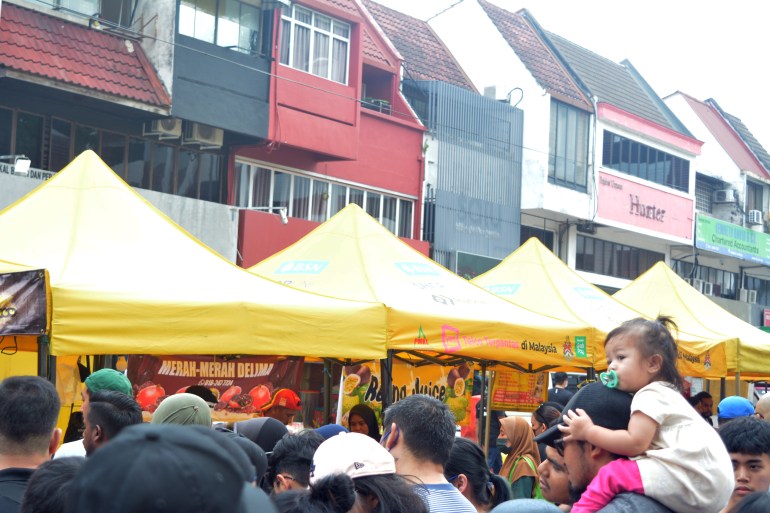
The bazaars usually open in the early afternoon so people have time to buy their food ready for the breaking of fast at sunset.
Aiedah has been researching halal communal dining and its effect on the social cohesion of multi-religious communities.
“What makes the Ramadan bazaars special is that they offer different types of food, especially food that is rarely available outside the Ramadan month,” she said.
“Now we can see huge Ramadan bazaars, especially in the urban areas, unlike 20-25 years ago.”
Keeping prices down
With the high cost of living, this year some small traders have joined the government’s Rahmah Ramadan Bazaar initiative, which is designed to ensure food for buka puasa (the breaking of fast) is sold at reasonable prices.
Nur Mastura has a Menu Rahmah sticker at her stall, which means the price of the 2 types of rice cake she sells is capped at 1 Malaysian ringgit ($0.23) each.
“Ramadan bazaars are a way to celebrate so many cultural cuisines. I’ve been selling putu bambu, an Indonesian kueh (cake) at bazaars for four years now. People keep coming for the taste of it,” the 19-year-old told Al Jazeera.
She is studying for a diploma in banking but helps out on her family’s stall at the Masjid Jamek Ramadan bazaar in the centre of Kuala Lumpur.
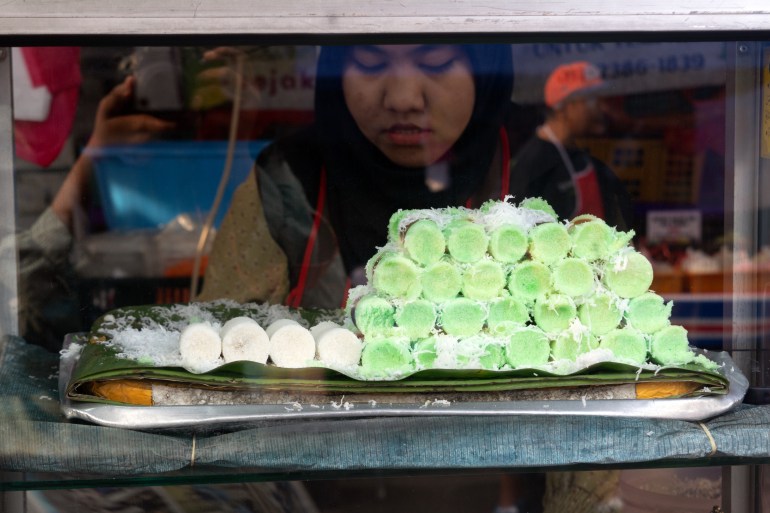
Traditionally, Malaysians prefer to break their fast with dishes that will be gentle on their stomach following the long hours without food or water.
One such traditional dish is bubur lambuk, which is made by cooking the ingredients together in a single pot, translated as scattered porridge.
At most mosques, the dish is given out free of charge during Ramadan. The porridge is usually made with meat, onions, garlic, coconut oil and several spices like cinnamon sticks, fennel seeds, star anise, cloves and fenugreek.
“Everyone has their own secret recipe. It depends on the budget and ingredients,” said Saiful Azrul, as he and his brothers – all full-time hawkers – stir their porridge in large pots on the side of the road in preparation for the evening bazaars. “We enjoy cooking together and donating half of what we cook.”
They only sell bubur, which they start cooking in the morning, during Ramadan.
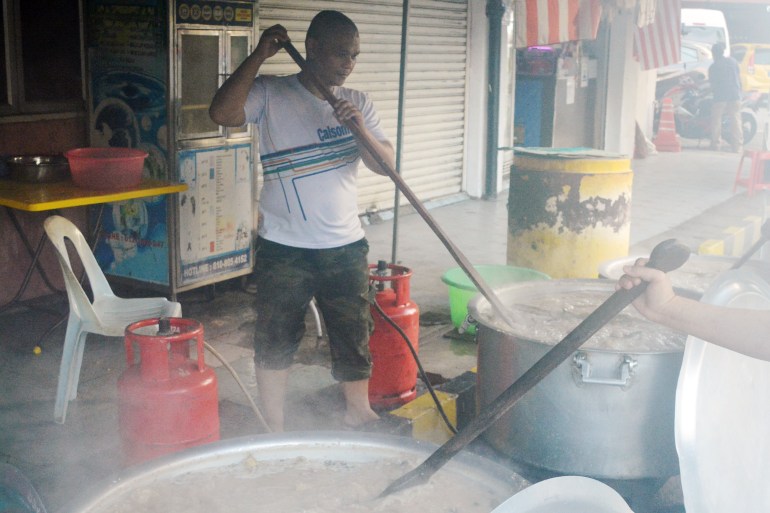
Malaysian food is often spicy and melds styles and flavours from across the world.
“I was surprised by the large variety of food options as there was also some food I had never seen before in Malaysia,” said Anne Hilbert, a 23-year-old exchange student visiting Malaysia from a Dutch university. “I felt a strong feeling of community among the people at the bazaars.”
They have been sampling the Thai-style skewers made by Adlin Ahmad and her sister at a Ramadan bazaar along the river in the centre of Kuala Lumpur.
“My elder sister and I sell grilled skewers and noodle soup. Everyone comes together during Ramadan to sell their specialities,” said 29-year-old Adlin, who graduated from university in 2015 and now sells snacks for a living.
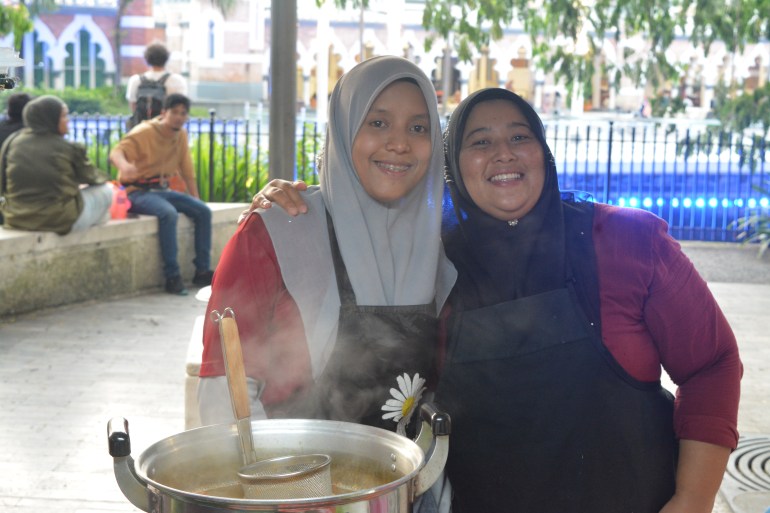
“We pay 600 Malaysian ringgit ($135) for the month to put up our stall,” the Ahmad sisters told Al Jazeera. “Due to the increase in raw material prices after COVID-19, the food prices increased as well.”
The higher prices have meant slower sales for some, adding to food waste, which was rising even before the COVID-19 pandemic hit. As well as bazaars, Ramadan in Malaysia also sees hotels and restaurants putting on sometimes lavish buka puasa buffets.
The amount of solid waste, including food, collected during Ramadan rose to 252,521 tonnes last year, compared with 208,143 tonnes in 2019, according to deputy local government development minister Akmal Nasrullah Nasir.
“The amount increases every year and in the past five years, we have seen an increase of up to 21 percent,” he told reporters after launching a Hari Raya event on April 10. Food made up 44.5 percent of the waste, he added.
Local vendors say they try to donate the leftovers so they do not have to throw away large quantities of food on a slow day. They are also more careful about the amount they make in the first place.
“Usually there aren’t a lot of leftovers as we got used to cooking correct quantities over the years. Snacks like ours stay fresh over a week. If not, I usually donate the rest at my brother’s school,” Adlin said.
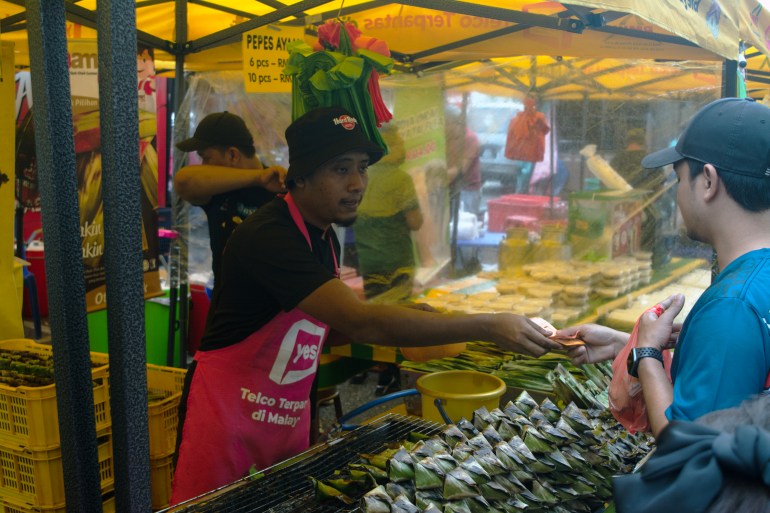
By early evening, the bazaars are winding down as Malays head home to wait until the sunset prayer when they can start eating together.
The bazaars will operate until April 21, the eve of Hari Raya Aidilfitri.